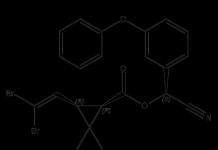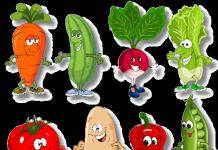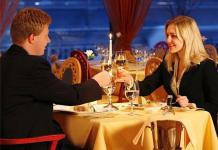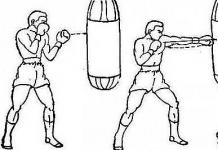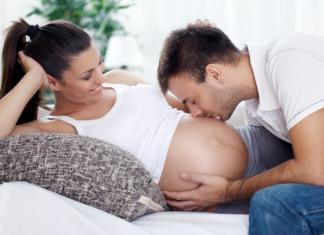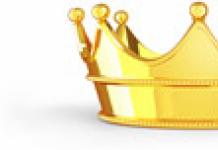Most of the information about the world around us is made up of visual impressions, and color plays a huge role in the perception of visual images. The ability to notice the slightest nuances has greatly contributed to the survival and development of the human species. Almost all people have a subconscious reaction to color: soft colors of nature calm, while unnaturally bright ones cause anxiety. Given this fact, to create a comfortable interior, it is important to understand the principles of the influence of both individual colors and their combinations on the psyche.
The impact of color in the interior on a person
Physicists say that colors don't actually exist - they're just different wavelengths of light that the brain interprets in one way or another. It is quite difficult to believe in this thesis, because we can absolutely accurately determine the shade of any object in the material world, and it remains unchanged regardless of the place or time of stay. Be that as it may, every person feels the influence of the color palette around him. The mechanism of this effect has not been fully studied, but psychologists still know some general features.
For convenience, colors are divided into categories according to their main characteristics: dark and light; pastel and rich; bright and muted. Depending on the temperature, warm, cold and neutral colors are distinguished. Black, white and gray are called achromatic, all others are called chromatic. The latter include the three main colors: red, green and blue, as well as all the options resulting from mixing them with each other or with a black and white palette. The result is amazing - a person is able to recognize up to ten million shades.

Considering the psychological influence of color, it is worth noting that we are talking primarily about pure tones. Any admixture changes the quality of perception. For example, soft coral will have a calming effect, while rich scarlet will excite the nervous system.
In general, warm colors such as red, yellow and orange are considered tonic: they speed up the heartbeat, improve appetite, and increase attention. Cool shades of blue, cyan, and green relax, lower blood pressure and somewhat slow down the reaction. The body subconsciously perceives an abundance of light (white, pastel colors) as a sunny day, automatically increasing energy levels, while gray, black, dark blue and gloomy purple set a person up for the upcoming sleep.
In order not to make a mistake when choosing colors for the interior, it is necessary to take into account their inherent optical effects. For example, if you place two identical-sized objects of different colors next to each other, the brighter one will always appear larger. Dark, muted tones visually reduce volume, while light and glossy tones increase volume. Using these features, you can adjust the width of the walls, the height of the ceiling, place accents and zone the space.


How to choose “your color”?
Throughout life, each person develops his own attitude towards the color palette. Choices can be influenced by personality traits, individual experiences, mental associations, mood, and even health status.
When decorating the interior, you should pay close attention to the sensations that arise when interacting with certain colors. As an example, it is recommended to remember the design of the most comfortable places for you: your favorite restaurant, friends’ apartment, grandma’s house, finally. You can borrow a palette from nature - it could be the sea coast, the edge of a forest, a blooming garden or a mountain landscape.
Beautiful pictures from the Internet can be a wonderful source of inspiration. Find an image you like and try to mentally repeat it in the interior - transfer the background to the walls and ceiling, reflect bright details in furniture elements, textiles and decor. It is advisable to observe the proportions of colors inherent in the picture, so that the same harmony is obtained in the end. It’s not at all necessary to choose a photo of a design - take anything: a bouquet of tulips in a jug, a rustic landscape, shells on the seashore or a chocolate cream dessert. This method allows you to independently create very natural and pleasing compositions.

Table of color combinations in the interior
Combining shades is a whole science. It is necessary to understand the basic rules, if followed, colors placed together will complement and emphasize each other, enhancing the sense of style. The best color combinations in the interior are obtained using the following methods:
1) Monochrome - shades of the same color of different depth and saturation are used. Using red as an example, it could be a pastel pink background with brick and burgundy accents. In the blue palette, it is possible to combine light blue, turquoise and ultramarine. In green tones - the colors of lime, olives and moss.
2) Related shades. Similar tones are located next to each other, in one quarter of the color wheel. Examples - blue, purple, pink; yellow, orange, red; blue, green, yellow.
3) Contrasting colors. Here, harmony is built on opposites - in the color wheel, the shades are strictly opposite each other, and their dissimilarity creates a dynamic and noticeable pair.
4) Related-contrasting combination. In this case, the shades are combined due to the admixture of some third color in them. So, for example, in light green and orange there is a yellow that unites them, and this triangle looks great together.
White
Matches with colors: all pastel and pure bright colors, black, gray, gold; It is better to use cream with warm ones, and snow-white with cold ones.
Does not match colors: no (combines with everyone).
Color effect: creates a feeling of cleanliness, spaciousness and daylight. A glossy, all-white room can feel overly sterile and reminiscent of a laboratory.
Suitable for: interior of bathroom, bedroom, living room.







Grey
Matches with colors: yellow, red, orange, green, purple, pink, blue, black, white.
Does not match colors: golden, brown.
Color effect: psychologically neutral, does not cause emotions in itself. Associated with shade, rainy weather, winter. A monochrome gray interior can cause depression.
Suitable for: studio apartments, bedrooms, kitchens, home office.






Black
Matches with colors: white, gray, gold, red, green, orange, purple.
Does not match colors: all pastel, blurry, shaded; with yellow - danger sign (road signs, radiation and high voltage warning signs).
Color effect: status, suitable for creating an atmosphere of luxury. Reminiscent of deep night, visually reduces space.
Suitable for: studio apartments, large halls.







Red
Matches with colors: black, white, gray, gold, brown.
Does not match colors: purple, pastel shades; looks extravagant with blue and green.
Color effect: excites the nervous system, increases activity. May cause aggression and anxiety in children.
Suitable for: interior of kitchen, living room.






Orange
Matches with colors: brown, green, purple, pink, blue.
Does not match colors: no (combines with everyone).
Color effect: friendly, warming color. Reminds me of summer, sun and oranges. Increases sociability, energy, and creates a good mood. Does not promote relaxation and is contraindicated in hot climates.
Suitable for: kitchen, children's room, living room with windows facing north.






Yellow
Matches with colors: brown, orange, light green, white, gray, purple.
Does not match colors: no (combines with everyone).
Color effect: warm, open, joyful. Sunny yellow softly illuminates the room, gives cheerfulness, promotes concentration, and increases curiosity. Prolonged exposure to a saturated shade can be overwhelming.
Suitable for: kitchen, children's room, office.






Green
Matches with colors: brown, gray, white, black, yellow, pink.
Does not match colors: red.
Color effect: the most natural color, harmonious and calming. Refreshes, gives rest to the eyes, restores strength. Pale shades of green in large quantities can be depressing.
Suitable for: interior of a bathroom, children's room.






Pink
Matches with colors: white, beige, gray, pastel blue.
Does not match colors: red.
Color effect: Feminine pink creates a soft and serene atmosphere and eliminates depressive thoughts. This color can irritate active and overly tense people.
Suitable for: living room, bathroom, nursery, bedroom.




Coco Chanel said that the most successful color is the one that suits you best. And it’s simply impossible to say better, but sometimes it’s difficult to implement.
We always have things in different colors in our wardrobe, but it can be difficult for us to make them go well with each other. Even if you try to wear things of the same color, you may not achieve color harmony. Each color has different shades. But if you study color harmony a little, you will learn to easily find shades that match each other and choose the right clothes.

It is important to learn the science of how to combine colors in clothes and be able to create a harmonious image in order to show something in a favorable light. Different shades interact with each other to create different color combinations. Using the right color combinations, you can improve your interior, clothing and many other things.
There is a color theory that can help anyone create the right color combination. Once you know what colors to combine in clothes, you can choose clothes with ease. This skill is quite important, especially if you shop online, because you cannot stand in front of a mirror and see how this or that thing fits on you. To learn how to match colors, you will need to take a color wheel and study it carefully.

How to use the color wheel
The combination of colors occurs according to certain rules. The artist I. Itten created certain color schemes that are most suitable for each other. He placed all the colors in a circle in such an order that they were separated by degree of primacy and interacted with each other.
This circle was created to make it easier for beginning artists to work with flowers. They were able to find out which shades go together. This color wheel helps all people who are involved in creativity, including clothing designers.

In the enclosed space of this circle, colors are placed - from basic to secondary and tertiary. Many shades are formed from primary colors - red, blue, yellow. The more colors are mixed, the more shades you get. To accommodate the full spectrum of existing colors, a sphere with even more shades is placed inside the circle.

Creating color harmony
If you look at the basis of a color composition, you can see how the colors combine with each other. There are many different combinations that are combined into certain patterns that are not repeated among themselves. To build a particular scheme, several tones are taken and mixed with each other. Using the Itten circle you can build harmonious combinations. Let's look at how this can be done.

You can build color harmony from several colors in the amount of two, four, six. Two-tone color harmony uses similar and contrasting shades. For beginners, it is important to learn how to combine different shades of the same color.

It is enough to take one main color and try to match it with a shade of the same color. Clothes of the same shades will give nobility. In order not to make a mistake, it is better to choose shades that are distant from each other. Your clothes should not blend together, otherwise it will look unattractive.
A combination of different colors that contrast with each other on the color wheel will look no less attractive. Take orange and combine it with blue for a beautiful color contrast. Red against green will also look attractive. But in order to ensure that the color of the clothes does not shout or be too colorful, it is best to take some color as a base and add a little contrast to it.

When creating similar three-color combinations that suit each other, you need to take colors that are located next to each other on the color wheel. In color harmony this is called an analogue triad. In three-color harmony, adjacent colors and similar colors are usually taken that are in harmony with each other. Here it is also important to choose colors that will not merge with each other.
To create a classic three-color scheme - a triad, you can use an isosceles, equilateral triangle. You must select three equidistant colors from the circle that are in harmony with each other to create a triangular geometric shape.

Here it is important to highlight the main color, and the other two should be present in small quantities and complement the main one. From primary colors you can take red, blue, yellow, from secondary colors - purple, green, orange. You can combine colors along the line, using both adjacent colors and additional shades.

Try to fit a geometric figure into the Itten circle - a rectangle and a square. In a square scheme, use 2 or three similar colors. If you take different ones, you risk looking ridiculous. For example, you can get a four-color consonance of the following colors: purple, blue with a green tint, yellow and red with an orange tint.


In a rectangular design, two pairs are selected that contrast with each other. And here you have room for your imagination. However, you should be careful, otherwise the colors will be too colorful, and your image will be too flashy and ridiculous. This won't happen if you match three shades to one base color. You can even insert an equilateral hexagon into a circle, then you get a harmony of six colors.
All these diagrams, as well as a table of compatible colors, will help you make the right choice in clothing.



The right combination of colors in clothes
It is better to take dark as the main color. Dark basic items such as suits, jackets, trousers, and skirts are paired with light ones.
Clothes should not be allowed to resemble “the outfit of the fairy-tale hero Parsley.” And this will not happen if the color of all clothes is in harmony. If you want to get a contrasting combination, then you should not choose equal proportions of colors. When color blocking, always choose one color that is bright and the others not too bright. Combine bright colors with pale, inexpressive ones and your image will not look ridiculous.




Loud tones in clothes will balance neutral ones. However, not all neutral colors can be used. If you take black, then you should not choose bright colors for it, since it itself is saturated.
When you choose clothes in neutral shades, you can safely choose 3 things in the same color, but no more. To make the image bright, you should choose one bright color and several neutral ones.
Beige and gray tones will set off the appearance against a pastel background. This combination always creates softness in the image.



Sometimes it can be difficult to determine which colors go together. In this case, you can take advice from stylists on how to choose the right colors. There are win-win options, using which you can always look great.
Our attractive appearance will depend on how correctly we combine colors in clothes, look at the photo so as not to be mistaken. Red always looks bright and makes an image delightful, but you need to be careful when choosing clothes for it.
No other color should go beyond red, so choose neutral tones - beige, gray, milky, pure white. Pinks and purples will also look beautiful against red. Red clothes are typically combined with brown, chocolate, and blue.






When you choose a yellow outfit, choose something light to go with it, something that creates tenderness. If it is ocher or orange, then it will also look attractive against a yellow background. Pastel colors with yellow are good combinations, but only if the first ones are not so bright, but a little muted. If you want to create a contrast with yellow, take red or black, and perhaps turquoise.
If you are wearing something in a cold green shade, then choose something in a light gray color, as well as blue or cream. Warm green color will harmonize with blue, brown or beige. Peach, apricot, heavenly shades with warm green will create a delicate image.



When choosing a pink color, you need to consider whether it is cool or warm. For a warm shade, choose something mint, light green, soft lilac, amethyst or even blue jeans. If pink is cool, then other tones should be light and neutral. Mint shades and jeans would look good.
You can choose a huge number of other shades for brown, but green, blue, yellow and reddish tones are most suitable.


Burgundy color can be saturated with olive, bright gray or dark green. Red will also work only if it is complex or has a berry tone - blueberry or blackberry.
Turquoise colors will decorate if they are paired with light yellow. Orange or plain white. The fuchsia shade also looks advantageous against the turquoise background.



Coral shades are successfully offset by beige, flesh, and gray. Tones of rose and lilac can also be added to coral. Try also something dark brown, light yellow, dark blue or khaki.
The color wheel and photos of combined colors will undoubtedly help you in choosing tones in clothes, but you can do this on an intuitive level, based on your taste. If you know how to choose the right combinations, then you can always look great under any circumstances.




Taking style into account
It’s not enough to know how to correctly combine colors in clothes; you also need to take into account the style and occasion in order to look harmonious.
Business ladies should not use many different shades in their clothes. You should always adhere to the rule that there can be no more than three shades. Although, of course, sometimes it is permissible to use more, but they should be close to each other. Standard business style colors are white, black, dark blue, gray and beige. But if you choose different shades of these colors, it can also look great.


In a classic style, the number of colors and shades used can be increased, but only as long as it looks elegant. Therefore, flashy tones should not be used, unless it is red, which, by the way, is also considered classic. Therefore, choose dark shades. Light colors suitable for this style include white, beige, gray, and cream.
There are many color variations when choosing evening wear. The main thing is that she must create a bright, noticeable image that will make her stand out from the crowd. The right color schemes will help highlight the advantages of the figure. Black evening dresses are a classic, but any dark shades will work here too.



If you want to look bright and creative and emphasize your creative nature, then choose bright colors that look non-trivial. Here you have a wide choice. You can choose any bold combination, but you should still try not to overdo it and not make the image too colorful. Six tones will be enough, feel free to add black to other tones, it will look attractive.

Everyday items should be light and rich colors. Everyday outfits should be functional and elegant. Brown, red, gray, blue, terracotta will fulfill this task and create a pleasant image. You can choose a light tone, but you should not take it too light, let it be with a slightly gray tint.


For a romantic style, pastel shades and their combinations are chosen. And be careful not to use too dark colors, otherwise you risk looking gloomy. Light colors can be complemented with any bright colors that match the overall palette. Prints will add femininity and highlight romance.
Common colors for a sporty style include dark versions of gray or blue. However, recently stylists have been incorporating bright, rich shades into this style. Glowing neon colors have become quite popular in sportswear, so you can confidently choose them.





Blue color combinations are contrasting combinations with warm and light shades, but each shade of blue requires its own spectrum tones.
Blue color can be divided into its main shades: bright blue or blue-blue, blue-violet (royal blue), blue-green, gray-blue. We will look at dark blue separately.
These shades can be divided by color type: blue-blue is suitable for the “spring” color type; blue-violet is “winter”, gray-blue is “summer”, and blue-green is “autumn”. However, from the point of view of contrast, blue-blue and blue-violet are suitable for both “spring” and “winter”, and gray-blue and blue-green are suitable for “summer” and “autumn”.
The article presents 44 schemes of combinations of shades of blue with all possible variety of tones. Each palette includes supporting neutral colors that enhance contrast and also adjust the brightness of the combination.
Combinations with blue:
The combination with blue color is mostly contrasting. Firstly, this is the coldest shade of the entire color palette. Warm colors against it will look more juicy. Secondly, blue is a dark color and light colors will stand out next to it.
Related shades, such as blues and cool greens, create wonderful gradients that can also serve as a backdrop for warm tones.
Blue + pink, coral
The combination of pink and blue depends on the brightness of the pink: soft pink next to the main color gives softness to the combination, and fuchsia derivatives add boldness. Warm tones of pink, such as coral, pink-peach, sunset - create a bright thermal contrast.


Blue goes with pink:
white-lilac, medium pink, Barbie color, raspberry, purple-pink. Basic colors: creamy white, light gray, wet asphalt.
Blue-violet goes with pink:
royal pink, pink-peach, bright coral, magenta, fuchsia. Basic: light cream, old wood, black and gray.
Blue-green goes with pink:
white-lilac, shrimp, sunset, amaranth, purple-violet. Base: milky, gray-lilac, wet asphalt.
Gray-blue goes with pink:
the color of pink cotton wool, pink-peach, coral, fuchsia, raspberry. Neutral: soft cream, gray-beige, black-gray.
Blue + red, burgundy
The combination of red and blue is very strong, but it always needs the support of third-party shades, such as white, beige and/or black. Blue and red are the color contrast of the primary tones, however, they lie very close on the light scale, so the combination lacks the most expressive light contrast.


Blue goes with red:
scarlet, Chinese red, dark red, cherry, dark burgundy. Neutrals: creamy white, medium peach beige, black gray
Blue-violet goes with red:
light red, raspberry coral, dark red, bright burgundy, wine. Basic colors: light cream, light orange-beige, black-gray.
Blue-green goes with red:
Marsala color, watermelon, red chicory, ruby burgundy, wine. Base: milky, gray-beige, black-gray
Gray-blue goes with red:
garnet, red rose, pink-burgundy, bright burgundy, wine. Base: soft cream, medium yellow-beige, black-gray.
Blue + orange, peach
The combination of orange and blue is pronounced, as it is a combination of complementary shades. The most promising for the main color will be soft tones of orange: peach, mango, orange-coral. They, being less pronounced, make the combination harmonious, adding expressiveness from the difference in lightness. Consider the following combinations:


Blue-blue goes with orange:
peach, mango, orange, carrot, dark orange. Basic colors: creamy white, steel, wet asphalt.
Blue-violet goes with orange:
light peach, orange-coral, pumpkin, red-orange, red. Neutral: light cream, gray beige, wet asphalt.
Blue-green goes with orange:
yellow-coral, caramel, sienna, brick, red. Base: milky, gray-lilac, wet asphalt.
Gray-blue goes with orange:
peach, orange-coral, fiery, dark orange, red. Base: soft cream, greenish-gray, wet asphalt.
Blue + yellow, gold
The combination of yellow and blue is the apogee of thermal contrast. If medium-dark shades of blue are combined with warm tones of yellow (we discard rich lemon, canary), which have a small admixture of red, then this combination will be catchy, but not flashy. Gold gives blue an expensive shine.


Blue-blue goes with yellow:
cream, sunny yellow, banana, corn, bright gold. Neutrals: creamy white, medium peach beige, anthracite
Blue-violet goes with yellow:
apricot, saffron, signal, mustard, bright gold. Base: light cream, dark beige, wet asphalt
Blue-green goes with yellow:
grey-yellow, honey, hazel, pale gold, dark gold. Base: milky, gray-beige, wet asphalt
Gray-blue goes with yellow:
apricot, corn, yellow-orange, bright gold, golden oak. Basic colors: soft cream, medium orange-beige, wet asphalt.
Blue + warm green
The combination of blue and green in a warm palette is a moderate thermal contrast that makes the combination play, so much so that the gaze lingers slightly and continues to slide. The combination promotes relaxation and tranquility.


Blue-blue combines with warm green: pistachio, chartreuse, green apple, bright green, herbs. Base: creamy white, light beige, anthracite.
Blue-violet combines with warm green:
light green, light green, yellow-green, the color of a toad’s favorite, dark green. Base: light cream, medium beige, wet asphalt.
Blue-green goes well with warm green:
pale green, olive green, fainting frog, pine needle color, brown-green. Neutral: milky, medium neutral beige, wet asphalt.
Gray-blue goes with warm green:
light green, yellow-green, apple green, toad in love, dark green. Basic colors: soft cream, medium orange-beige, wet asphalt.
Blue + cool green
The combination of blue and green in cold colors is a play of related shades. The eye completes the intermediate tones, thereby making the combination iridescent and voluminous. This range is good for the background: you can always bring warm shades to the foreground.


Blue-blue goes well with cool green:
neon green, mint, jade, emerald, malachite. Neutrals: creamy white, steel, wet asphalt
Blue-violet goes well with cool green:
the color of water, neon green, jade, emerald green, malachite. Base: light cream, greenish gray, black gray
Blue-green goes well with cool green:
water color, gray-blue-green, pale menthol, emerald, dark cold green. Base: milky, greenish-gray, wet asphalt
Gray-blue goes well with cool green:
the color of water, menthol, mint, emerald, dark cold green. Basic colors: soft cream, silver, wet asphalt.
Blue + blue, light blue
And also dark blue tones are work with contrast. Lighter or darker tones of blue create a feeling of light and shadow, which adds volume: deepens it, makes it alive. This combination is a good background for more expressive couples.


Blue-blue goes with blue:
bright blue, topaz, medium blue, dark blue, black-blue. Basic colors: creamy white, steel, wet asphalt.
Blue-violet goes with blue:
aquamarine, soft blue, cyan, cornflower blue, indigo. Neutrals: light cream, platinum.
Blue-green goes with blue:
aquamarine, gray-blue, hyacinth, black sea color, thunderous. Base: milky, light gray, wet asphalt.
Gray-blue goes with blue:
the color of water, bright blue, dark blue, Prussian blue, dark blue. Base: soft cream, greenish gray, wet asphalt.
Blue + violet, magenta, lilac
The combination of blue and violet is essentially a combination of related shades, but since violet contains an admixture of red, a slight thermal contrast will also shine through. This combination is complete, although colors such as white, beige and black will add expressiveness to it.


Blue-blue goes with purple:
blue-violet, thistle, blackberry, purple, red-violet. Base: creamy white, medium brown beige, wet asphalt
Blue-violet combines with violet:
pale thistle, cyclomene, lilac, purple, grape. Base: light cream, medium yellow-beige, black-gray.
Blue-green goes with purple:
pale lilac, lilac-lilac, amethyst-lilac, brown-violet, red-violet. Basic colors: milky, medium neutral beige, wet asphalt.
Gray-blue goes with purple:
blue-violet, violet, thistle, purple, eggplant. Neutrals: soft cream, medium orange-beige, wet asphalt.
Blue + brown
The combination of blue and brown is one of the most attractive. Complex brown tones give the base color an intricate sophistication. Like practicality and sublimity, these tones form a mutually beneficial tandem. Additionally, brown can be considered a derivative of orange, which is complementary to blue.


camel, golden chestnut, red-brown, mahogany, coffee. Base: creamy white, medium brown-beige, black-gray.
camel, cinnamon, light chestnut, chocolate, coffee. Base: light cream, medium orange-beige, black-gray.
cocoa color with milk, nut, milk chocolate, brown-violet, dark chocolate. Neutrals: milky, medium lilac-beige, wet asphalt.
oak color, yellow-brown, golden chestnut, chocolate, coffee. Basic colors: soft cream, dark peach-beige, black-gray.
Blue + beige
The combination of blue and beige is soft, solid, expressive. Beige is a very light brown when it is in turn a cloudy orange. Therefore, the influence of the additional shade is observed in this combination.
The beige tone, no matter what combination it is in, adds a discreet expensive gloss, so even bright tones of blue next to it lose their childish simplicity.


Blue-blue goes with brown:
light yellow beige, light orange beige, medium peach beige, dark brown beige, dark pink beige. Base: creamy white, light grey, anthracite.
Blue-violet goes with brown:
light peach beige, light orange beige, medium orange beige, dark peach beige, dark green beige. Neutrals: light cream, platinum, wet asphalt.
Blue-green goes with brown:
light lilac beige, light neutral beige, medium taupe beige, dark taupe beige, dark brown beige. Basic colors: milky, silver and dark gray.
Gray-blue goes with brown:
light yellow beige, light orange beige, medium peach beige, dark peach beige, dark orange beige. Base: soft cream, greenish gray, wet asphalt.
Blue + grey, silver
The combination of gray and blue is one of the best ways to highlight the beauty and versatility of the blue shade. Gray, as a cold neutral color, is almost completely lost to the eye next to blue, giving it a natural coolness, restraint and depth.


Blue-blue goes with brown:
white-gray, light grey, silver, marengo, anthracite. Neutrals: creamy white, medium peachy beige.
Blue-violet goes with brown:
white-gray, silver, platinum, lead, dark gray. Base: light cream, light pink beige, wet asphalt.
Blue-green goes with brown:
USEFUL ARTICLES ON THIS TOPIC (click on the picture)
Ekaterina Malyarova
“Color can calm and excite, create harmony and cause shock. You can expect miracles from him, but he can also cause disaster” (c) Jacques Vienneau
Table of color combinations in clothes
A successful image is often the result of a successful color combinations in clothes. Not everyone can correctly combine colors in clothes, because this is a whole science based on special principles. If the colors are combined unsuccessfully, a feeling of irregularity and disharmony is created. This feeling cannot be described in words, because it is not so much connected with the concepts of fashion and style, but with the physical laws of color perception.
Theory

Yellow color is also a bright accent in the image, combined with blue, violet, blue, gray, cherry, black.

Blue color - a rich shade of blue combines well with white, beige, brown, red and yellow.

Blue is a rare color for shoes and attracts attention. Combines with white, cream, brown, cherry, pink, purple.

Green is also original as a color for shoes. Pairs with yellow, orange, white, cream and brown.
Of course, the ideal option is to have shoes of various colors in your wardrobe for all occasions. But this does not always work out, so pay special attention to the choice of shoe color.
And don’t be afraid to experiment - bold images will make you stand out from the crowd, instill confidence and create a good mood!
From childhood, we learn the rules of color combinations, like “black goes with everything,” or “pink and green are terrible” (Chekhov explained this, although judging by fashion shows, this combination will be at the peak of relevance this spring). Since these things are learned at an unconscious age, then, when we are already at a conscious age, we don’t think about why green and pink are bad, and whether black really goes with everything, but we actively use the learned combinations and avoid colors that we know nothing about. And even if we buy such a thing, then it gathers dust in the closet.Two years ago, in some strange impulse, I bought emerald green jeans; I really didn’t know what to pair them with besides black and white. Now for these jeans I have 1) a beautiful burgundy sweater, a gray cardigan + a white shirt, 3) a lilac T-shirt with a print, 4) red boots, however, by the time I found all this, the jeans were already worn out))). If, when I bought jeans, I had a book on color combinations (I bought one at a printing exhibition where I went with my husband), then I would have added my jeans to my wardrobe much earlier. But in general, to begin with, you can do without a book, since the rules for combining colors are well understood using the example of the color wheel, which is available on the Internet.
I will also add that these rules always apply, like the law of universal gravitation. This means that if some colors are combined in nature or in a painting by a great artist, then they will be combined in clothing and in the interior. Another thing is that at different times different types of combinations become relevant: for example, a couple of years ago it was very fashionable to combine shades of the same color, but since last year the trends of contrasting combinations have come to the fore (red with green, orange with blue, etc. .).
The basic rules for working with the color wheel are quite sensibly described in marriba at Learning to choose colors - part 1. I quote:
Today I will tell you how to work with color correctly. I use this with my Waldorf dolls. Even if your activity is not related to working with color, you can successfully use this information to select a wardrobe :)
(Please copy without changing the text and with a link to my blog.)
I promise not to go deep into the jungle of color :) but to give you a simple and clear way to harmoniously combine colors. You and I will use the well-known "theory of the seasons" about color types of appearance (according to theory, there are 4 such types: winter, spring, summer, autumn), as well as the color wheel.
Color circle.
The color wheel is convenient for selecting harmonious color combinations of 2, 3 or 4 colors. In each example, the lines connecting different colors can be mentally rotated in a circle, obtaining new combinations. Just look at these diagrams like a cheat sheet :)
(In addition to the combinations themselves, pay attention to the indication of contrast - we will need this later).
2 opposite colors: combination with high contrast.
red+green
blue+orange
purple+yellow
3 colors: classic triad, colors arranged in a triangle.
emerald green+yellow-orange+purple
cobalt blue+lime+orange
azure blue+lemon+red
blue+yellow+pink
Example: blue+yellow+pink
3 contrasting colors: two colors are almost related, one is contrasting.
Example: green+yellow+pink.
Very close option:
4 colors: 3 related and 1 contrasting.
Example: yellow+blue+purple+pink.
3 related colors: low contrast combination.
Example: lilac + shades of pink.
4 colors: two mutually reinforcing.
Example: blue + salad green + pink + warm beige instead of orange.
It's hard to find an example :)
This is more relevant for the set of clothes as a whole.
Every color can be used in varying degrees of saturation. In the color wheel below, each color is divided into 6 rows - from light pastels to muted ones, with bright and pure colors in the middle.



